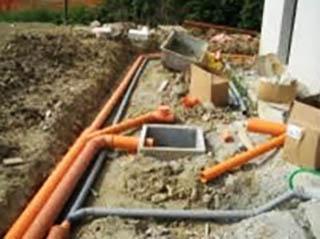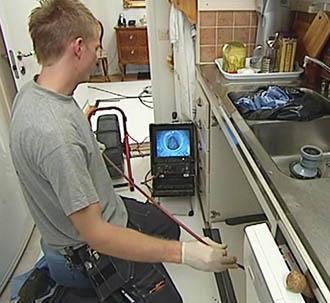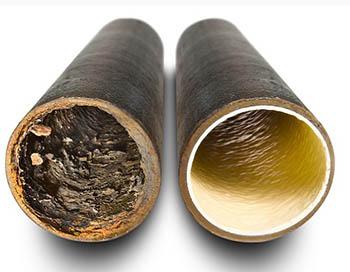Rebuilding plumbing system without demolition
Post from EditorialsAn innovative minimally invasive system that allows you to put in efficiency and safety the plumbing without demolition reducing costs and inconvenience for users.
Plumbing: maintenance problems
The plumbing in time are subject to malfunctions caused by several factors related to design flaws, poor execution of the work, misuse of some parts of the system, in addition to the normal wear and tear for using them. The consequences of these malfunctions may be solved sometimes in a simple way, with modest maintenance while in more severe cases it is necessary to intervene in a more invasive way, up to require the reconstruction of the entire plant.
The consequences of these malfunctions may be solved sometimes in a simple way, with modest maintenance while in more severe cases it is necessary to intervene in a more invasive way, up to require the reconstruction of the entire plant.
Intervening on a sewer, for example, in the simplest cases also involves the need to remove the floorings, perform ing excavations, limiting the use of the plant for a few hours, even for days, as well as the consequent inconvenience for those who use the service.
On top of that, many times to locate a leak or blockage without the adequate equipment by making attempts worsen the situation as well as increasing the costs of intervention.
If the problems described above affect a private property, where who decide how and when to intervene is only the legitimate and sole owner, you can solve the most of the situation without any great difficulty. If, however, the system to be repaired is of an apartment building, it is much more complicated. We will have residents that are not directly affected by a loss of the sewage system on the ground floor, who will try in every way to postpone the operation to not have to face costs and inconvenience.
If, however, the system to be repaired is of an apartment building, it is much more complicated. We will have residents that are not directly affected by a loss of the sewage system on the ground floor, who will try in every way to postpone the operation to not have to face costs and inconvenience.
Those who are most harmed by such a water leak, as the owners of the premises on the ground floor will trigger legal action against the building for the repair of the damage.
The many-years-professional-experience have convinced me that the obstructionism of some residents in respect of the works of reconstruction of the plant, origins in a series of questions that often, even some technicians called for a consultation on the matter, can not give a comprehensive answer to.
The questions, which normally the user turns to the technicians in charge of solving the problems described, are of the type: to what extent is the system still reliable? Is it still able to perform its function? Is more convenient to remake the system from scratch or make a series of repairs in various sections of it?
To answer the above questions, you need a lot of experience and professional honesty, in fact before venturing untrue diagnosis, you should carry out inspections and checks on the entire plant using the most modern diagnostic tools, such as video inspection of pipes in order to check its status conservation.
If from the results of the investigations described was to turn out that the plant is so worn and damaged to advise the customers to replace it, before you decide to do so it is good to evaluate whether to intervene by means of a new method of minimally invasive restoration capable of rebuilding from inside the existing pipe a new casing perfectly sealed durable over the years.
Innovative and minimally invasive restructuring systems
Companies that employ the above method are not many, as it is necessary to have special requirements in order to ensure the effectiveness and the duration of the intervention.
SEE-TECH is one of these, it offers a range of efficient services in the field of research and repair water leaks with the use of modern and non-invasive techniques. In particular for the reconditioning of the plant's pipes it adopts two systems called stub pipe repair with Packer, useful for work on plant traits, and Relining for the restoration of the entire duct to be treated.
The company Tubus System applies the Relining system using a spray technique from inside and it declares that Relining is a non-destructive method used routinely in Northern Europe to repair and rehabilitate the sewage pipes inside the existing pipe coating with several layers of an exclusive composite reinforced plastic particularly resistant to chemicals. The composite, once cured, forms a new exhaust system, secure and self-supporting with a certified life of at least 50 years.
By virtue of the European standard exclusive certifications offered by Tubus System is good to dwell on the operational phases with which the company proceeds during surgery rehabilitation. To act even on a complex exhaust system, first you need to determine the access points, which are normally represented by the manholes and the toilet.
To act even on a complex exhaust system, first you need to determine the access points, which are normally represented by the manholes and the toilet.
So, once removed the bowls and opened the manholes, you proceed with a similar technique to perform a survey endoscopic video inspection system more accurately. Subsequently, after the cleaning of the pipes, we proceed with the drying of the same.
After drying, apply several layers inside the pipes of a patented material made exclusively in reinforced polyester very resistant to corrosion.
Thanks to a suitable equipment not invasive at all, the reinforced polyester will completely adhere to the entire surface of the existing pipe thus in effect creating a new and more resistant pipe.
The Relining intervention allows to intervene on pipes having a minimum diameter of 50 mm. After the completion of the coating operations of the existing pipes will be carried out a new video inspection, in order to verify the success and the quality of the intervention. Then, when obtained a favorable response of the Company Quality Center you have sent the images of the video control inspection to, you proceed to the reassembling of the bathroom fixtures and the closing of the previously open manholes.
After the completion of the coating operations of the existing pipes will be carried out a new video inspection, in order to verify the success and the quality of the intervention. Then, when obtained a favorable response of the Company Quality Center you have sent the images of the video control inspection to, you proceed to the reassembling of the bathroom fixtures and the closing of the previously open manholes.
On completion of the work, the Tubus System sends the customer a ten-year guarantee on the work carried out together with all the documentation obtained in the various phases of video inspection.
The company in question can guarantee the quality of the intervention, with the experience gained in over 40,000 interventions carried out successfully, which has helped to perfect the technique of intervention to achieve high standards of quality such as to obtain in 2014, first and unique in the world, the ETA approval and CE certification of all processes in the system and the materials used.
The use of quality materials allows the company to ensure a sealing expectation of the renewed plant for at least 50 years.
The advantages of the new methods of intervention
In light of the foregoing, it is immediately evident, even to those who do not have experience in the industry, how many and what might be the advantages of adopting such a system, in fact, who attended the performance of similar work carried out by traditional methods will have noticed how have been necessary permits and various designs, excavation, demolition, service disruptions and inconvenience of any kind, even for a long time. The demolitions and excavations in rooms or narrow spaces, in addition to delaying the time of intervention, many times involves the possibility of damaging other parts of the building. With the method of the Tubus System everything is averted over to allow building occupants to carry very little discomfort with their activities.
The demolitions and excavations in rooms or narrow spaces, in addition to delaying the time of intervention, many times involves the possibility of damaging other parts of the building. With the method of the Tubus System everything is averted over to allow building occupants to carry very little discomfort with their activities.
The work shown is environmentally friendly, it does not require materials to be disposed of, which, given the high costs of disposal to landfill, represents a further economic advantage.
From a strictly economic point of view, the method of intervention is used in many situations in my opinion more convenient than the traditional method taking into account the reduction of the execution time and the elimination of all the hardships related to this.
Imagine in this regard, having to demolish a section below the sewage in a space of high architectural value, whose flooring, made of materials and techniques not in use anymore, and that would not be possible to reproduce anymore: well in a case like this one, the convenience of intervening with the system of the Tubus System is so obvious that every other consideration is unnecessary.
79806 REGISTERED USERS










